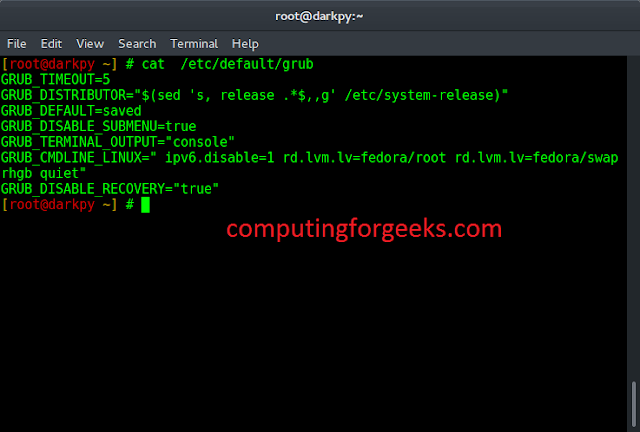Given list of strings, perform concatenation of ranged values from the Strings list.
Input : test_list = [“abGFGcs”, “cdforef”, “asalloi”], i, j = 3, 5
Output : FGorll
Explanation : All string sliced, FG, or and ll from all three strings and concatenated.Input : test_list = [“aGFGcs”, “cforef”, “aalloi”], i, j = 1, 4
Output : GFGforall
Explanation : Similar slicing operation different ranges.
Method #1 : Using loop + string slicing
This is brute way in which this task can be performed. In this we iterate for all strings and perform concatenation of values of range of each string.
Python3
# Python3 code to demonstrate working of # Concatenate Ranged Values in String list# Using loop# initializing listtest_list = ["abGFGcs", "cdforef", "asalloi"]# printing original listprint("The original list : " + str(test_list))# initializing rangei, j = 2, 5res = ''for ele in test_list: # Concatenating required range res += ele[i : j] # printing result print("The Concatenated String : " + str(res)) |
The original list : ['abGFGcs', 'cdforef', 'asalloi'] The Concatenated String : GFGforall
Time complexity: O(n * (j-i)), where n is the length of the input list and (j-i) is the length of the concatenated substring.
Auxiliary Space: O(j-i), as we are creating a new string of length (j-i) to store the concatenated substring. The space required for the input list and loop variables is not considered as auxiliary space as they are part of the program logic.
Method #2 : Using list comprehension + string slicing
This is yet another way in which this task can be performed. In this, we extract a particular range of string in one liner using list comprehension and string slicing as above method.
Python3
# Python3 code to demonstrate working of # Concatenate Ranged Values in String list# Using list comprehension + string slicing# initializing listtest_list = ["abGFGcs", "cdforef", "asalloi"]# printing original listprint("The original list : " + str(test_list))# initializing rangei, j = 2, 5# join() used to join slices togetherres = ''.join([sub[i : j] for sub in test_list]) # printing result print("The Concatenated String : " + str(res)) |
The original list : ['abGFGcs', 'cdforef', 'asalloi'] The Concatenated String : GFGforall
Time complexity: O(n*m), where n is the length of the input list and m is the length of the substring (j-i).
Auxiliary space: O(m), where m is the length of the substring (j-i).
Method 3: using the map() function and the join() method. Here is an example code:
Python3
# Python3 code to demonstrate working of # Concatenate Ranged Values in String list# Using map() function + string slicing# initializing listtest_list = ["abGFGcs", "cdforef", "asalloi"]# printing original listprint("The original list : " + str(test_list))# initializing rangei, j = 2, 5# using map() to perform slicingsliced_list = map(lambda x: x[i:j], test_list)# join() used to join slices togetherres = ''.join(sliced_list)# printing resultprint("The Concatenated String : " + str(res)) |
The original list : ['abGFGcs', 'cdforef', 'asalloi'] The Concatenated String : GFGforall
Time complexity of the above code is O(nm), where n is the number of strings in the list and m is the length of the sliced string.
Auxiliary space complexity of the above code is O(nm), where n is the number of strings in the list and m is the length of the sliced string.
Method #4: Using the reduce() function from functools module.
Use reduce() to apply a lambda function that concatenates the required range of each string in the list. The lambda function takes two arguments x and y, which represent the accumulated result and the current element of the list being processed, respectively. The initial value of x is set to an empty string (”) and the required range is concatenated with x using the string slicing operation y[i:j]. The result of reduce() is the final concatenated string.
Python3
from functools import reduce# initializing listtest_list = ["abGFGcs", "cdforef", "asalloi"]# initializing rangei, j = 2, 5# Using reduce() + string slicing + lambdares = reduce(lambda x, y: x + y[i:j], test_list, '')# printing original listprint("The original list : " + str(test_list))# printing result print("The Concatenated String : " + str(res)) |
The original list : ['abGFGcs', 'cdforef', 'asalloi'] The Concatenated String : GFGforall
Time complexity: O(N*L), where N is the number of strings in the list and L is the length of the required range.
Auxiliary space: O(L), where L is the length of the required range.
Method #5: Using str.join() and list slicing
- Initialize a list of strings to be concatenated, e.g., test_list = [“abGFGcs”, “cdforef”, “asalloi”].
- Define the range of characters to be concatenated from each string, e.g., i, j = 2, 5.
- Initialize an empty string to hold the concatenated substring, e.g., res = ”.
- Loop through each string in the list.
- For each string, extract the range of characters defined by i and j using string slicing, e.g., ele[i:j].
- Concatenate the extracted substring to the result string res.
- Once all strings have been processed, print the final result string.
Python3
# Python3 code to demonstrate working of # Concatenate Ranged Values in String list# Using str.join() and list slicing# initializing listtest_list = ["abGFGcs", "cdforef", "asalloi"]# printing original listprint("The original list : " + str(test_list))# initializing rangei, j = 2, 5# Extracting required range using list slicing and joining using str.join()res = ''.join([s[i:j] for s in test_list])# printing result print("The Concatenated String : " + str(res)) |
The original list : ['abGFGcs', 'cdforef', 'asalloi'] The Concatenated String : GFGforall
Time complexity: O(n), where n is the length of the input list.
Auxiliary space: O(n), where n is the length of the input list, due to the list comprehension




